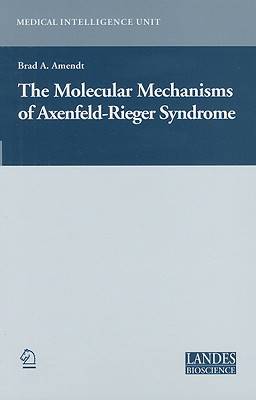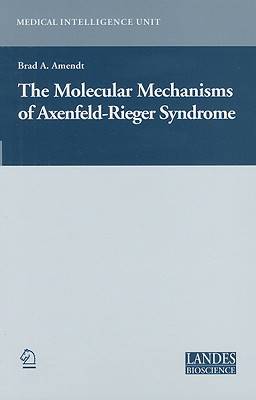
- Afhalen na 1 uur in een winkel met voorraad
- Gratis thuislevering in België vanaf € 30
- Ruim aanbod met 7 miljoen producten
- Afhalen na 1 uur in een winkel met voorraad
- Gratis thuislevering in België vanaf € 30
- Ruim aanbod met 7 miljoen producten
Zoeken
The Molecular Mechanisms of Axenfeld-Rieger Syndrome
€ 167,95
+ 335 punten
Omschrijving
We are excited to bring together recent research on the molecular biology of Axenfeld-Rieger syndrome (ARS) disorders. In the following chapters we will review and provide direct evidence for the molecular basis of this group of heterogeneous disorders, which include Rieger syndrome and Rieger anomaly. While ARS patients were initially diagnosed in the early 1930s the genetic basis for ARS was unknown until the recent identification of chromo- somal loci associated with this genetic disorder. In the mid-1990s Drs. Jeffrey C. Murray and Elena V. Semina identified PITX2 through positional cloning tech- niques as a gene associated with ARS. These researchers were able to iden- tify point mutations in PITX2 that were linked with ARS patients. ARS patients presented clinically with several developmental anomalies that fur- ther provided clues about the function of the PITX2 homeobox tran- scription factor. The phenotypic variability of ARS patients indicates that PITX2 can participate with many other faaors to control normal development processes. The hallmarks of ARS developmental anomalies are eye, tooth and umbilical defects. However, abnormal pituitary, heart, and craniofacial development are also detected. Thus, ARS patients provided the first link of PITX2 involvement in the development of these organs and structures. Some of these anomalies are recapitulated in epigenetic and genetic mouse, chick, zebrafish and frog studies which will be reviewed in the following chapters.
Specificaties
Betrokkenen
- Uitgeverij:
Inhoud
- Aantal bladzijden:
- 106
- Taal:
- Engels
- Reeks:
Eigenschappen
- Productcode (EAN):
- 9780387262222
- Verschijningsdatum:
- 13/07/2005
- Uitvoering:
- Hardcover
- Formaat:
- Ongenaaid / garenloos gebonden
- Afmetingen:
- 157 mm x 234 mm
- Gewicht:
- 317 g

Alleen bij Standaard Boekhandel
+ 335 punten op je klantenkaart van Standaard Boekhandel
Beoordelingen
We publiceren alleen reviews die voldoen aan de voorwaarden voor reviews. Bekijk onze voorwaarden voor reviews.










